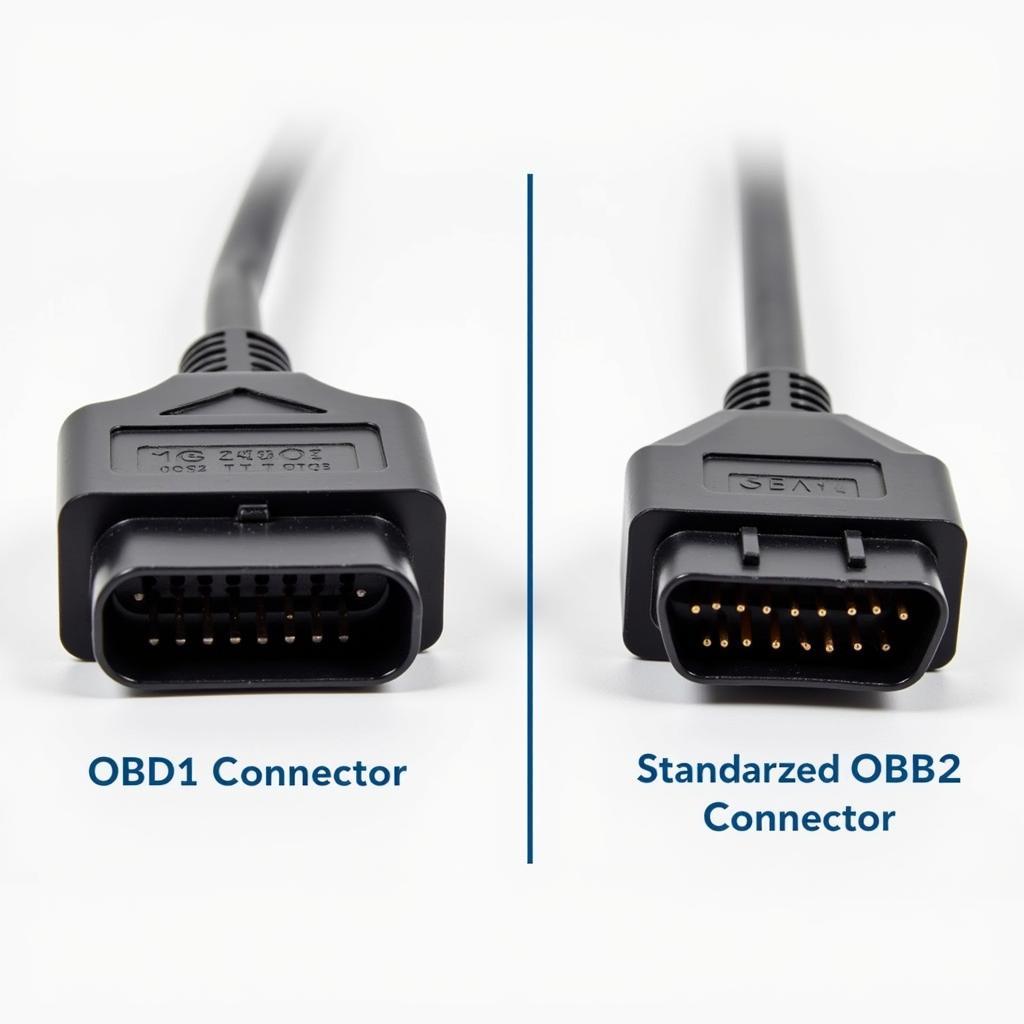The Honda H22A engine, a performance powerhouse known for its potent VTEC system, has been gracing Honda and Acura vehicles for decades. As a proud owner of a vehicle sporting this impressive engine, you might be wondering about its onboard diagnostics system, particularly if you’re facing the “OBD1 vs. OBD2” question. This detailed guide will delve into the differences between OBD1 and OBD2 systems, specifically focusing on the H22A engine, to help you understand their implications for diagnostics, tuning, and overall vehicle maintenance.
While both OBD1 and OBD2 aim to simplify engine diagnostics, they have distinct characteristics that set them apart. Understanding these differences is crucial, especially when troubleshooting issues or considering performance modifications.
Decoding OBD: A Foundation
Before diving into the comparison, let’s establish a basic understanding of On-Board Diagnostics (OBD). Envisioned as a standardized approach to engine management and emissions control, OBD systems act as your vehicle’s internal communication network. They continuously monitor various engine parameters, flagging potential issues by storing diagnostic trouble codes (DTCs) in the Engine Control Unit (ECU).
OBD1: The Precursor (Pre-1996)
OBD1, prevalent in most vehicles manufactured before 1996, represents the first iteration of standardized engine diagnostics. While it marked a significant leap from rudimentary systems, OBD1 had limitations. It primarily relied on a single, manufacturer-specific diagnostic connector and offered limited diagnostic capabilities.
OBD1 on the H22A Engine
For H22A engines equipped with OBD1, retrieving trouble codes typically involves bridging specific pins on the diagnostic connector and observing the engine’s check engine light (CEL) flashes. This method, while functional, can be cumbersome and less informative compared to its successor.
OBD2: The Evolution (Post-1996)
Introduced in 1996, OBD2 revolutionized engine diagnostics with its standardized 16-pin diagnostic connector and expanded diagnostic capabilities. This standardization facilitated universal compatibility with OBD2 scanners, empowering vehicle owners and mechanics alike with more accessible and comprehensive diagnostics.
OBD2 on the H22A Engine
H22A engines transitioned to the OBD2 system in 1996, bringing numerous benefits. The standardized connector and protocol enabled more precise diagnostics, encompassing a broader range of engine parameters. This enhanced capability translates to more accurate troubleshooting, faster repairs, and potentially lower maintenance costs.
Key Differences: OBD1 vs. OBD2 on the H22A Engine
While the core function of both systems remains consistent, several key differences affect how you interact with your H22A engine:
-
Diagnostic Connector: The transition from OBD1 to OBD2 brought a standardized 16-pin connector, eliminating the confusion of manufacturer-specific interfaces.
-
Diagnostic Capabilities: OBD2’s expanded capabilities allow it to monitor a wider array of sensors and systems, offering a more comprehensive picture of your engine’s health compared to OBD1.
-
Data Richness: OBD2 provides access to a wealth of real-time data, including engine RPM, speed, coolant temperature, and more, which can be invaluable for performance tuning and diagnostics.
-
Emissions Monitoring: OBD2 incorporates stringent emissions monitoring, ensuring your H22A engine operates within acceptable environmental standards.
Benefits of Upgrading from OBD1 to OBD2
If your H22A engine is equipped with OBD1, you might consider upgrading to OBD2 for several compelling reasons:
-
Enhanced Diagnostics: Benefit from more accurate and comprehensive diagnostics, enabling faster and more effective troubleshooting.
-
Performance Tuning: Unlock advanced tuning capabilities by accessing real-time data and making precise adjustments to optimize your engine’s performance.
-
Increased Compatibility: Enjoy universal compatibility with OBD2 scanners, empowering you with more choices and flexibility in selecting diagnostic tools.
-
Simplified Maintenance: Streamline maintenance tasks with easier access to diagnostic information, potentially saving you time and money in the long run.
Making the Right Choice: OBD1 vs. OBD2
The choice between OBD1 and OBD2 ultimately depends on the year of your H22A engine and your specific needs. For vehicles manufactured before 1996, OBD1 remains the standard. However, upgrading to OBD2 is a worthwhile investment if you seek enhanced diagnostics, tuning capabilities, and overall convenience.
Conclusion: Empowering H22A Owners with Knowledge
Understanding the nuances of OBD1 and OBD2 is crucial for any H22A engine owner. This knowledge equips you with the tools to make informed decisions regarding diagnostics, maintenance, and performance upgrades. Whether you’re troubleshooting an engine light or exploring the potential of your H22A, a firm grasp of OBD systems is invaluable.
Remember, OBD systems are your allies in maximizing the performance, reliability, and longevity of your cherished H22A engine.
Need Help? Get in touch with our team of automotive experts available 24/7. Contact us via WhatsApp: +1(641)206-8880 or Email: [email protected] for assistance with all your OBD and vehicle diagnostic needs.


